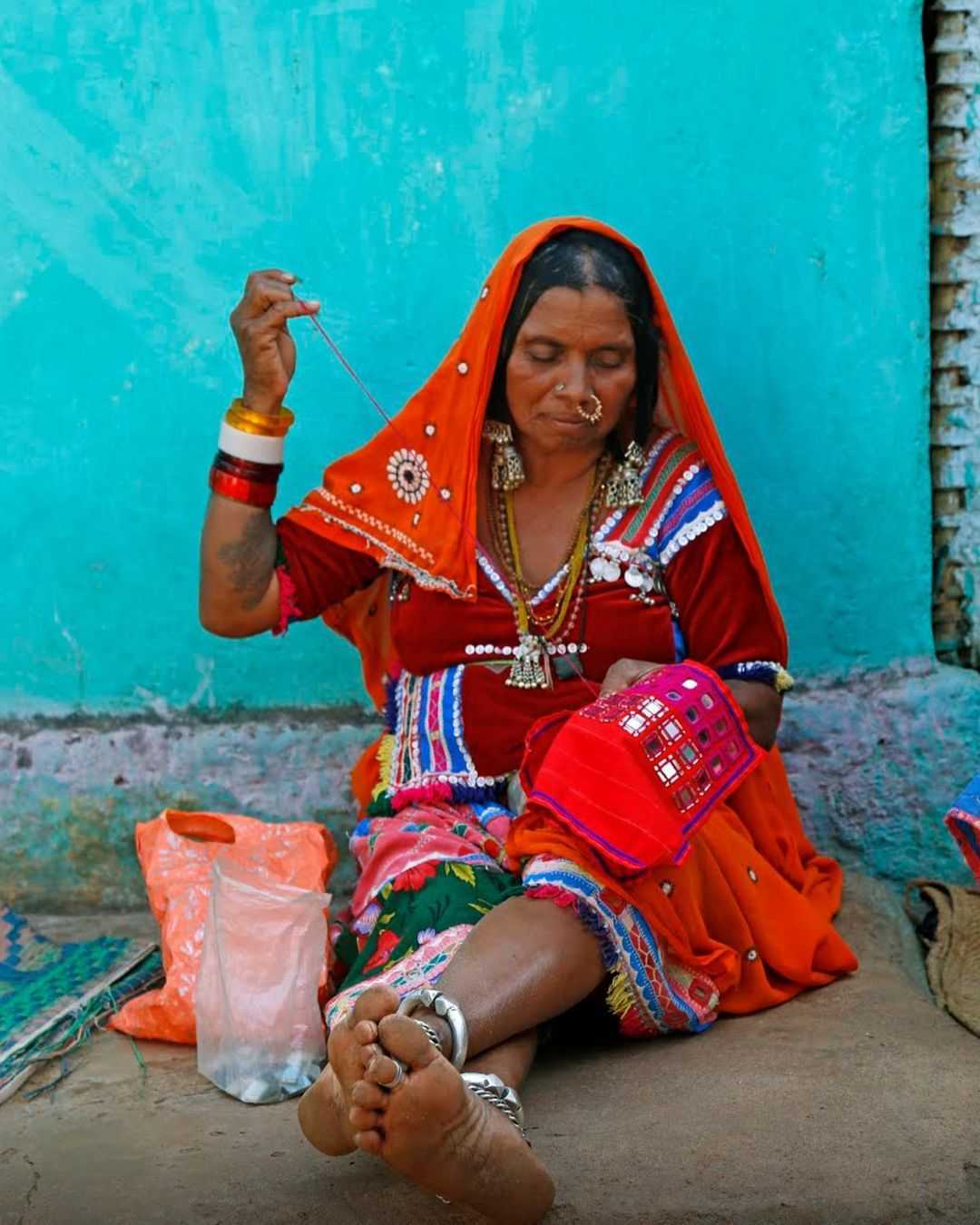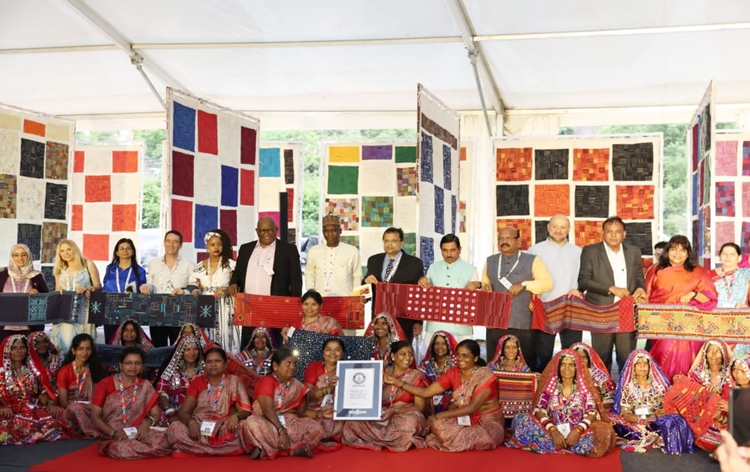India’s G20 Presidency achieved a remarkable feat by setting a Guinness World Record for the ‘largest display of Lambani items,’ showcasing a total of 1,755 intricately crafted pieces. The record was established under the ‘Culture Unites All’ campaign, which falls under the purview of the Culture Working Group within the Ministry of Culture. This momentous exhibition, entitled ‘Threads of Unity,’ celebrates the aesthetic expressions and design vocabulary of Lambani embroidery, an exquisite art form practiced by the Lambani community of Karnataka.
The exhibition was inaugurated at the Yeduru Basavanna complex in Hampi by Prahlad Joshi, the Minister of Parliamentary Affairs, Coal, and Mines. Over 450 Lambani women artisans and cultural practitioners associated with the Sandur Kushala Kala Kendra Kendra (SKKK) joined forces to create the remarkable array of items. These artisans utilised the Geographical Indication (GI)-tagged Sandur Lambani embroidery technique, employing 1,755 patchworks to achieve this impressive record.
The initiative to secure a Guinness World Record not only aligns with the Indian Prime Minister’s campaign for Mission ‘LiFe’ (Lifestyle for Environment), but also with the Culture Working Group’s practice for ‘Culture for LiFe,’ which promotes an environmentally conscious lifestyle and fosters sustainability.
Commendable effort, which will popularise Lambani culture, art and craft as well as encourage Nari Shakti participation in cultural initiatives. https://t.co/ladDbRMZ3u
— Narendra Modi (@narendramodi) July 10, 2023
Lambani embroidery is renowned for its vibrant colours, intricate stitch patterns, and the incorporation of mirror work. It is primarily practiced in several villages across Karnataka, including Sandur, Keri Tanda, Mariyammanahalli, Kadirampur, Sitaram Tanda, Bijapur, and Kamalapur. This embroidery tradition serves as a significant source of livelihood and economic empowerment for the skilled Lambani women, blending their living practices with sustainable income generation.
The Lambani craft tradition follows the sustainable practice of patchworking, a technique prevalent in many textile traditions in India and around the world. This art form involves skilfully stitching together small pieces of discarded fabric, resulting in beautiful and unique textiles. The Lambani embroidery techniques and aesthetics are reminiscent of textile traditions found in Eastern Europe, West Asia, and Central Asia. This interconnection highlights the historical movement of nomadic communities across these regions, fostering a shared artistic culture.
The symbolic power of Lambani embroidery lies in its ability to unite cultures through craft. This makes it an ideal representation for the ‘Culture Unites All’ campaign, which seeks to celebrate shared heritage, promote dialogue, and foster understanding among diverse communities.

The Sandur Kushal Kala Kendra (SKKK), established as a Society in 1988, plays a pivotal role in reviving traditional crafts and enhancing the livelihoods of Lambani craftswomen. It achieves this by nurturing their skills, promoting their products, and ensuring a sustainable income. SKKK currently collaborates with approximately 600 artisans and has nurtured twenty self-help groups. Over the years, it has garnered national and international recognition for the Lambani craft, including receiving the prestigious UNESCO Seal of Excellence for Handicrafts in South Asia in 2004 and 2012. In 2008, SKKK secured the GI tag for ‘Sandur Lambani hand embroidery,’ further cementing the craft’s authenticity and cultural significance.
The Guinness World Record-breaking exhibition of Lambani items not only showcases the exceptional talent and creativity of Lambani artisans but also is an example to India’s commitment to cultural preservation, sustainable practices, and the promotion of dialogue and understanding among diverse communities. Through this remarkable achievement, the ‘Culture Unites All’ campaign shines a spotlight on the shared heritage and interconnectedness of cultures, bridging gaps and fostering harmony in a world that thrives on unity and mutual respect.
Feature image courtesy: authindia
To read more about Lambani embroidery. Click Here

Contributor





